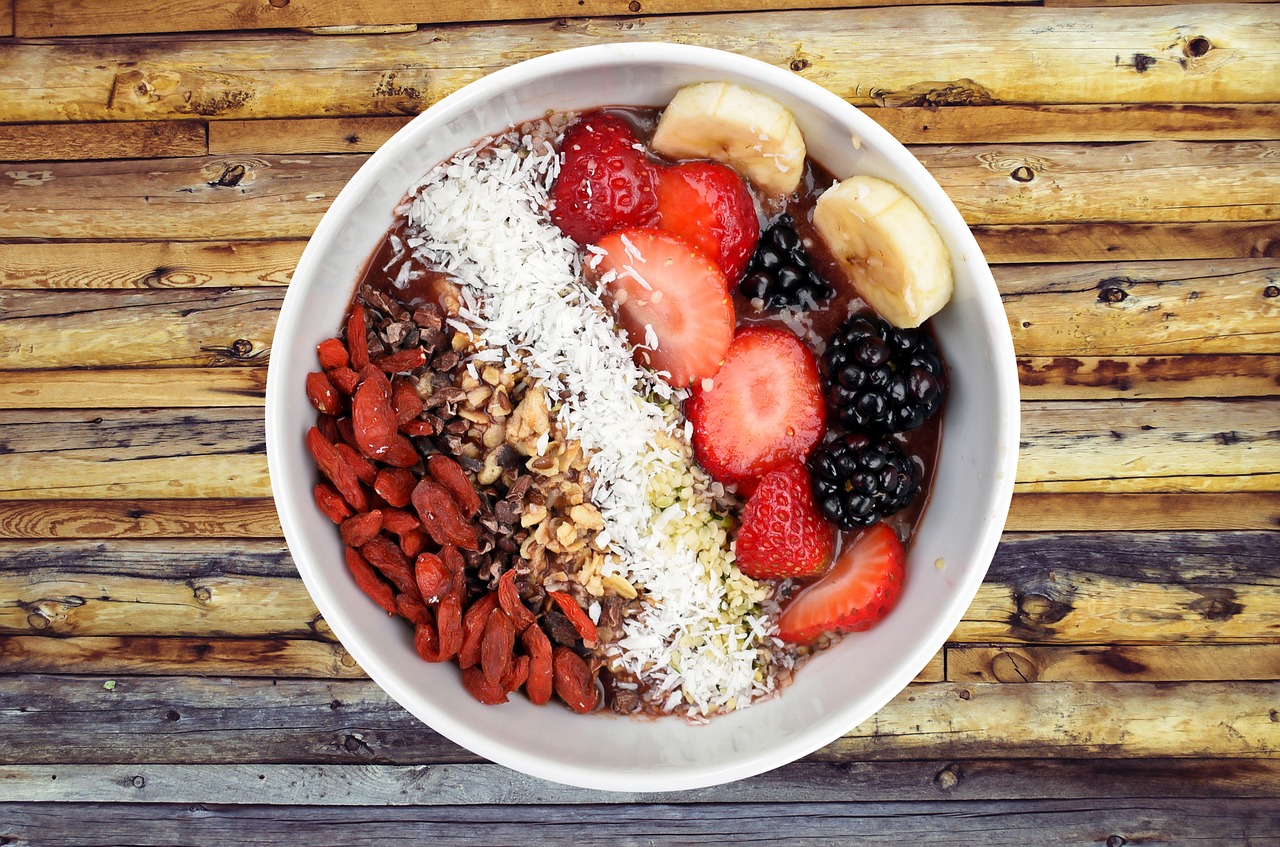Have you ever wondered what the big deal is about dietary fiber? Why it is so important to consume a minimum of 20 grams per day? If you’ve ever heard the statement “health and happiness begin in the bowels,” then you are aware that every physiological function in your body depends on how efficiently you absorb nutrients and eliminate toxins – both of which are functions of a healthy digestive tract. Fiber is the key to enhancing the efficiency of your digestive tract.
Dietary fiber is a catchall term for nutrients in the diet that are not digested by gastrointestinal enzymes. So why is it so important for us to consume indigestible nutrients? The indigestible part of plant foods–aka fiber–pushes through our digestive system while absorbing water and toxins along the way. This, in turn, optimizes the ease and efficacy of bowel movements, which supports healthy detoxification, nutrient absorption, and prevents all too common bowel diseases due to constipation.
The healthier and more efficient your colon functions, the faster toxins and other waste products are eliminated from your body. Typical western diets full of refined, processed, and low-fiber foods cause an increase in transit times that translates to bogged down, ineffective bowel function. When not functioning appropriately, the colon can become a breeding ground for parasites, bacteria and viruses.
Types of fiber: Soluble vs Insoluble
As you may infer from their names, soluble fiber dissolves in water while insoluble does not. Soluble Fiber, found in beans, pectin, peas, citrus fruits, apples, carrots, barley, oatmeal, oatbran and psyllium seeds, is fermeted in the colon by bacteria, turning the fiber into a gelatinous substance. The gelatinous fiber absorbs water as it goes through the digestive tract. This slows its movement through the intestines allowing it time to bind toxins, excess cholesterol and bile acids. The fermentation process also provides nutrition for healthy bowel bacteria supporting and strengthening our first line of immune defense found in the digestive tract.
Insoluble fiber never changes as it quickly moves through the digestive tract. Increasing the speed at which food moves through the intestines helps to prevent stagnation and therefore protects against diseases that grow due to stagnation. This form of fiber, found in leafy greens, Brazil nuts and wheat bran, creates the bulk necessary to move food through the digestive tract effectively. This also makes bowel movements easier to pass and aids in relieving constipation.
A healthy balance between soluble and insoluble fiber helps to regulate the rate at which food is digested and effectively treats both diarrhea and constipation.
Benefits of Fiber
Hormone Regulation
Fiber, such as psyllium, helps to bind excess estrogens and other hormones allowing for easy removal from the body. Ineffective hormone regulation creates hormone imbalances, which may lead to balding, depression, infertility, fatigue, irritability, extreme PMS and menopausal symptoms.
Healthy Detoxification of Organs
The liver dumps toxins into the bowel for elimination. Once bound by soluble fiber in the intestines, toxins are eliminated from the body in the safest and most natural way possible. Insufficient fiber causes hormones and other toxins to be absorbed back into circulation requiring them to pass through the liver once again, causing major congestion of the liver and consequently a back up of new toxins, putting major stress on your detoxing system.
Immune Health
A high fiber diet also supports immune function by promoting beneficial intestinal bacteria such as lactobacillus. These bacteria help to strengthen the intestinal immune response, one of the first lines of defense in combating against disease causing pathogens. While increasing beneficial bacteria, fiber also works to inhibit harmful endotoxin-producing bacteria in the colon that commonly result in fever and altered resistance to bacterial infections. Having the proper microflora in the intestines helps with elimination and protects against foreign attack by other pathogenic bacteria.
Cholesterol Lowering Effects
Soluble fiber helps to lower serum cholesterol and triglyceride levels by increasing the amount of bile acid and fatty compounds that are excreted through the feces. The increased conversion of cholesterol to bile acids for excretion actually decreases the amount of cholesterol that is made, reducing total serum cholesterol.
Faster Satiety
Because Fiber-rich foods tend to be lower in calories, you are able to consume greater quantities, leading to faster meal satisfaction on lighter foods. Fiber also requires more chewing allowing your stomach enough time to communicate with your brain as to when you have consumed enough food. As we slow down the rate at which food is digested, our bodies have enough time to secrete appropriate amounts of digestive enzymes further optimizing the breakdown of food and increasing nutrient absorption.
Blood Sugar Regulation
By slowing the absorption of sugar, fiber moderates gently changes in blood sugar. The presence of glucose and fiber together, as in say apples, improves glucose tolerance by delaying the rate at which the stomach empties as well as the rate at which glucose enters the bloodstream. This is why an apple is a healthier option than apple juice. The fiber in the apple will allow you to feel fuller longer while also avoiding significant spikes in blood sugar, commonly caused by fiber-less juices.
Pura Vida Fiber Drink
It is best to get at least 20-35 grams of fiber daily through diet and supplements. To assist you in reaching this goal, start your day with this simple and effective digestion stimulating fiber shot and begin eliminating toxins safely, effectively and naturally throughout your day.
Some intestinal disorders or tumors causing intestinal obstruction require a low fiber diet. Please consult with your current health care provider, or make an appointment at Pura Vida Natural Medicine to discuss your heath concerns in order to ensure fiber is an appropriate form of treatment for you.
Author: Dr. Karen Lamb, NMD, LPC
Image by Kevin Phillips from Pixabay





To the puravidanaturalmedicine.com owner, Your posts are always a great read.